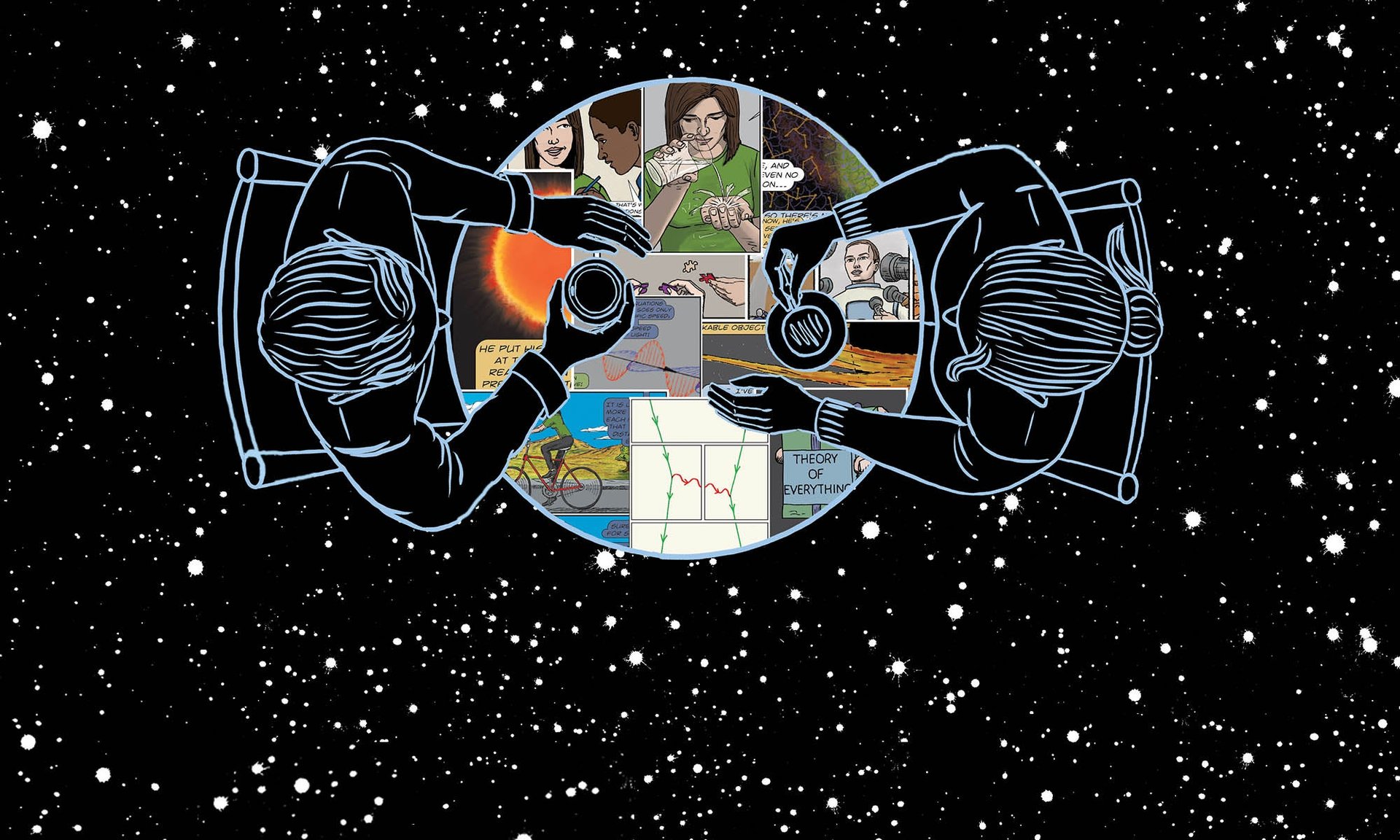A physicist ponders the universe’s most mysterious questions—in a comic book
Physicist and astronomer Clifford V. Johnson wants to chat with you about, well, everything that matters: love, life, death, space, time, god, quantum mechanics.


Physicist and astronomer Clifford V. Johnson wants to chat with you about, well, everything that matters: love, life, death, space, time, god, quantum mechanics.
Just as often as we gossip or talk politics, Johnson says, we should consider what our world is made of, how it came to be, how we understand it, and why we believe the things we do. To initiate those conversations—on trains, at cafes, in museums, at parties, and in random meetings on the street—the University of Southern California professor wrote and drew a graphic novel, called The Dialogues: Conversations about the Nature of the Universe.
Released in the US in 2017, and the UK this year, the book tackles both simple and difficult notions in nine conversations, accompanied by drawings. Johnson calls the comic book a collection of “sequential art” that is itself a work of physics, writing:
Space and time and the relation between things are at the heart of how comics work: Images (sometimes contained in panels but not necessarily) arranged in sequence encourage the reader to infer a narrative that involves the sense of time passing, of movement, and so forth. In this sense, fundamentally comics are physics!
Johnson explicitly rejects the notion that some science is for uniquely talented abstract thinkers, arguing that the questions that theoretical physicists explore are not too complicated for the rest of us, and are relevant to all. And he proves it in his book: His characters are adults and kids who ponder how rice grains appear to multiply when cooked and how to calculate the number of jelly beans in a jar, and discuss the notion of a unified “theory of everything” and the meaning of life and death.
In one of the dialogues, a scientist talks to a man she meets on the train about how a god might be created. If a space traveler were to travel to a planet many light years away, time would pass differently there, and he could return to Earth knowing hundreds of years of human history, while remaining young and be seen as a deity.
The two train passengers also debate whether love can last forever—she says no, everything must die, arguing that death is not an end to things but a beginning, or a transition to becoming something else. He, on the other hand, believes love outlives death, and can endure infinitely. When he gets off the train, he falls into the embrace of a woman—and the scientist watches thoughtfully, maybe longingly, from the window as she continues her journey.
Johnson’s research explores the “hidden structures” of the universe; what the Earth, the sun, the planets and you and me are made of and how it all works together. It sounds intimidating—yet the physicist says that part of what he wants to show people through the graphic novel is that science is just another way that people communicate, like drawing comics or writing novels. It can be the basis for a flirtatious conversation, or an illuminating one.
Johnson doesn’t just want to convey scientific theories, although he does that too, using drawing and mathematical equations that are often omitted from science writing for lay people. He wants to show how to think about existence.
Of course, there’s plenty that we do not know now, and we may never know it all. There is no perfect method for finding answers, or certainty that we’re asking the right questions. But the physicist argues, through his characters, that we can still enjoy this eternal quest—the fact that the more scientists uncover, the more questions are raised.
To make our way through a confusing universe, with lots of information but not nearly all the data we need to understand it, a character in the graphic novel offers a simple metaphor. ”It’s like solving a jigsaw puzzle,” a physicist explains to a science enthusiast she meets at a cafe. “But one of those, you know, 10,000-piece ones, of a vast landscape with large areas of subtly changing features. And just to be clear. This puzzle comes with no picture of what is printed on the box.” Plus, no one knows just how many pieces this puzzle contains.
The Dialogues proposes that there’s beauty in this freedom. The same strategies we might use to solve a puzzle apply to theoretical physics: There are edge pieces and corners, clues that connect the pieces. Scientists are just people who are turning over various pieces, trying to figure out which might work with another.
“Sometimes you’re lucky and a few pieces that have been turned over can be seen to fit together,” the character says. “Or one piece simply leads you to find another piece.”